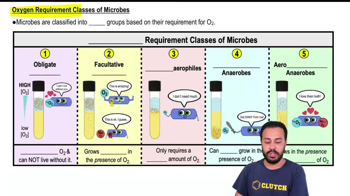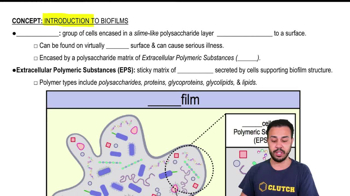26. Prokaryotes
Prokaryotic Metabolism
Learn with other creators
Practice this topic
- Multiple ChoiceOrganisms that use light for their energy source and CO2 for their carbon source are called __________.1242views
- Multiple ChoiceIn an experiment, a microbiologist put equal numbers of each of the following organisms into a flask of sterile broth, consisting mostly of sugar and a few amino acids. She then placed the flask in the dark. Which of the organisms would be most likely to survive?1691views
- Multiple ChoiceThe Desulfovibrio bacterium breaks down organic matter (which it must have) and uses sulfate (not oxygen) as an electron acceptor. As a result, it produces hydrogen sulfide (H2S), accounting for the "rotten egg" smell of swamp muck. Oxygen is a deadly poison to Desulfovibrio. We would call Desulfovibrio a(n) __________.1568views
- Multiple ChoiceChoose the list below that contains the substances required by typical nitrogen-fixing cyanobacteria.1223views
- Textbook Question
What do some photosynthetic bacteria use as a source of electrons instead of water?
a. Oxygen (O2)
b. Hydrogen sulfide (H2S)
c. Organic compounds (e.g., CH3COO−)
d. Nitrate (NO3-)
1315views - Textbook Question
Photoautotrophs use
a. Light as an energy source and CO₂ as a carbon source
b. Light as an energy source and methane as a carbon source
c. N₂ as an energy source and CO₂ as a carbon source
d. CO₂ as both an energy source and a carbon source
1996views - Textbook Question
What are organisms called that use inorganic compounds as electron donors in cellular respiration?
a. Phototrophs
b. Heterotrophs
c. Organotrophs
d. Lithotrophs
1270views - Textbook Question
What does the chemiosmotic hypothesis claim?
a. ATP is generated using phosphates taken from intermediates in the electron transport chain.
b. ATP is generated using a phosphate gradient produced by glycolysis and the citric acid cycle.
c. ATP is generated using a proton-motive force that is produced by the electron transport chain.
d. Water is generated using electrons taken from NADH and FADH2 and transported through the electron transport chain.
1639views











